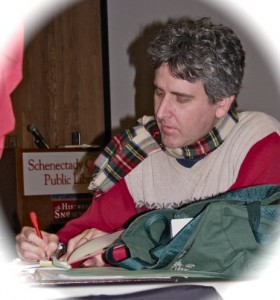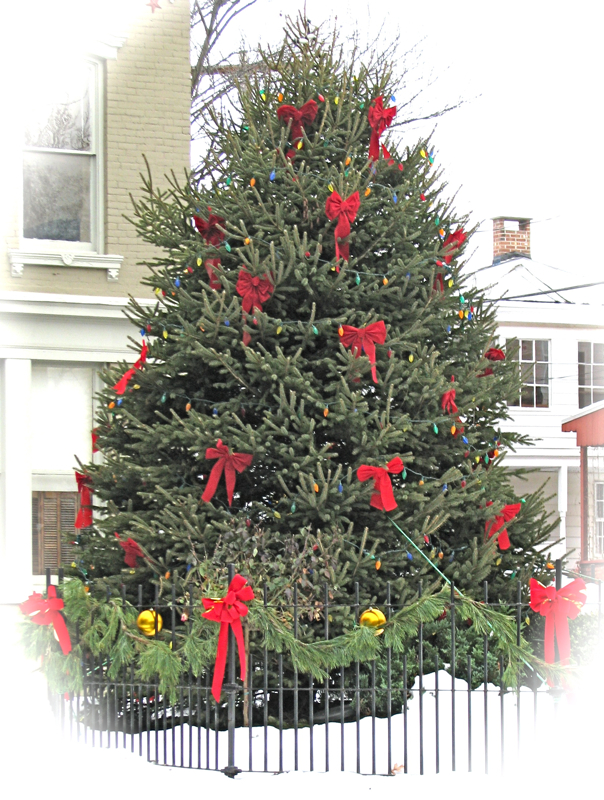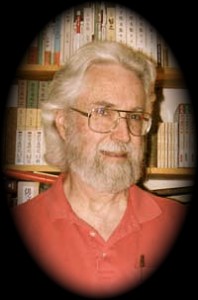poem: David Giacalone
photo: Mama G. (Dec. 9, 1950)
– haiga orig. posted at MagnapoetsJF weblog
“mom’s arthritis” – Roadrunner (Nov. 2005)
Affectionate Birthday Greetings to Mama G. (Connie, 82 yesterday), and to Brother G. (Arthur, 59 today). Long before they provided photos for dagosan‘s haiga, my mother and twin brother obviously played large roles in forming — for better or worse — the person I have become. We also share a genetic heritage that seems more pressing now than it did back in my youth. Therefore, as I begin my 60th year (and, especially since I’m known both for sounding the alarm over the Graying of the Legal Profession and for trumpeting the broadened horizons that come with appreciating the haiku moment), it would be most appropriate to ponder how nature and nurture have prepared me for my remaining time on this planet.
 However, with my body and brain definitely feeling their age this morning, my credentials as Nap Room advocate and overall napping expert seem more pertinent and pressing than any pretensions as pundit or poet. That little voice in my head, which has done so much to sharpen my procrastination skills over he past six decades, is telling me I’d be nuts to work any harder than necessary on my birthday. Therefore, I’m merely going to point you to a couple articles that ask questions and try to provide answers to the question “am I too old to be doing this?”
However, with my body and brain definitely feeling their age this morning, my credentials as Nap Room advocate and overall napping expert seem more pertinent and pressing than any pretensions as pundit or poet. That little voice in my head, which has done so much to sharpen my procrastination skills over he past six decades, is telling me I’d be nuts to work any harder than necessary on my birthday. Therefore, I’m merely going to point you to a couple articles that ask questions and try to provide answers to the question “am I too old to be doing this?”
 ..
..  .. “In My 60 Years“ is Jacob A. Stein’s Legal Spectator column this month in the D.C. Bar’s Washington Lawyer magazine (Dec. 2008): The dean of lawyer pundits says:
.. “In My 60 Years“ is Jacob A. Stein’s Legal Spectator column this month in the D.C. Bar’s Washington Lawyer magazine (Dec. 2008): The dean of lawyer pundits says:
Well, October marked my 60th year of practice, and I think I have earned the prescriptive right to stand up and declare, “In my 60 years of practice, …” for whatever effect it may have. However, I have yet to do so.
I was speaking with a friend who also is a member of the 60-year club. We questioned whether age denies us what it takes to read documents, court rules, fine print, and appellate opinions that run more than 10 pages. Do we still have that vigor of mind?
“Do we still have that vigor of mind?” is certainly the question. In their more candid moments, quite a few of my Baby Boomer friends have admitted that they’ve seen a diminution of that mental vigor (not to mention the physical variety). Stein’s column seems to wander more than usual, and we see that he is unhappy with the mindset that “gradually moved the practice of law into the culture of the marketplace.” I know quite a few small-law practitioners who will get a warm glow from this observation from Jacob Stein:
“There continues to be a thriving practice that is separate from the marketplace. It is made up of lawyers who vindicate the constitutional rights of people, lawyers in small firms who practice in the counties surrounding the big cities, and specialty lawyers in domestic relations, personnel matters, and probate matters. However, it is the marketplace firms that define the big-time practice.”
After 60 years of practice, the only personal platitude for lawyering that he leaves us with is: “you must make your own mistakes and you must learn your own limitations.” He ends with a few more maxims that “may also work for you,” including:
- Be kind, for everyone you meet is fighting a great battle.
- Most irrationality has some connection, however attenuated, with reality.
And, this one, that comes in handy for weblog pundits (like Scott Greenfield), too:
“This day I shall have to do with an idle curious vain man, with an unthankful man, with a talkative railer, a crafty, false or an envious man. An unsociable sarcastic man. A greedy man. A deceiver. Such is the way of the world, and I shall be no more affected by it than I am about changes in the weather.”
–Marcus Aurelius
(Stein’s translation from the Latin)
 “Where age matters less: newspapers” — Rex Smith, managing editor of the Albany Times Union, offered his take on aging boomers in the workplace a few days ago (December 6, 2008). Rex was responding to the New York Times article “A Generation of Local TV Anchors Is Signing Off” (by Brian Stelter, Dec. 1, 2008). In that article (in a warning to other high-priced “veteran” talent like lawyers, perhaps), Robert Papper, chairman of Hofstra University’s journalism department, says longtime anchors at top-rated stations in local markets are at little risk of being laid off. But:
“Where age matters less: newspapers” — Rex Smith, managing editor of the Albany Times Union, offered his take on aging boomers in the workplace a few days ago (December 6, 2008). Rex was responding to the New York Times article “A Generation of Local TV Anchors Is Signing Off” (by Brian Stelter, Dec. 1, 2008). In that article (in a warning to other high-priced “veteran” talent like lawyers, perhaps), Robert Papper, chairman of Hofstra University’s journalism department, says longtime anchors at top-rated stations in local markets are at little risk of being laid off. But:
“if I were a very highly paid anchor of a No. 3 station, I’d be really nervous.”
Smith lists and explains the attributes he is looking for in a newspaper journalist: intelligence (a “clever, analytical brain” to interpret what’s going on), energy; curiosity; and (not until fourth) communication skills. He concludes:
“So by my reckoning, the only key skill for a newspaper journalist that is likely to diminish over time is energy. That’s not why those aging TV anchors are losing their jobs. Their problem is that the skills a TV station values aren’t the same as those that matter to we newspaperfolk, and the anchors are mighty expensive.”
Your assignment (hey, it’s my birthday, I’m taking the rest of the day off) is to read the entire column and let us know how the attributes chosen by Rex Smith for journalists compare to your own list for lawyers — which, if any, diminish over time.
Discovery channel –
an older male vanquished
heads for the hills
within the red wine
a nap in my chair
……………………. by Tom Clausen – Upstate Dim Sum (2003/II)
— find more Giacalone Birthday Haiga here — 



 As we described in detail in our earlier post, for example,
As we described in detail in our earlier post, for example,
 As we predicted last week in our post “
As we predicted last week in our post “
 I’m sitting here sipping coffee from my “fun and attractive” History of the Snowman
I’m sitting here sipping coffee from my “fun and attractive” History of the Snowman 


 The result was “
The result was “


 ………… by
………… by 











 On December 4, 2008,
On December 4, 2008,  The Glossary in “
The Glossary in “
 If you are a regular reader wondering where the haiku is today, here are a few before I go, starting with Ed Markowski and then a trio from the newest issue of The Heron’s Nest:
If you are a regular reader wondering where the haiku is today, here are a few before I go, starting with Ed Markowski and then a trio from the newest issue of The Heron’s Nest:


 “Our expert faculty will discuss hot topic issues relating to . . . billing based on ‘value pricing’.”
“Our expert faculty will discuss hot topic issues relating to . . . billing based on ‘value pricing’.” As discussed in our prior posts, we’ve seen many red flags that call for ethics scrutiny and guidance, or raise fiduciary concerns regarding value billing/pricing. For example, value billing proponents:
As discussed in our prior posts, we’ve seen many red flags that call for ethics scrutiny and guidance, or raise fiduciary concerns regarding value billing/pricing. For example, value billing proponents: .. Traditionally, “value” has meant “a good product at a good price,” and has always taken into account competitive market forces that tend to bring price down to the seller’s cost. That’s why computers cost less today than a decade ago, although buyers “need” or “value” them more now, as they have become central in our business and personal lives. So, we need to be suspicious, I believe, of a new definition of value that is based on a buyer guessing in advance just how much a product is worth, without knowing the quality or quantity of the services to be performed or the actual results, and with no connection to what the service costs the seller to produce. To say a fee is “reasonable” if the client agrees to pay it (or agrees to the subjective “value” of the service), makes the rule against unreasonable fees moot. We need a better standard and guidelines when using value billing. Don’t we?
.. Traditionally, “value” has meant “a good product at a good price,” and has always taken into account competitive market forces that tend to bring price down to the seller’s cost. That’s why computers cost less today than a decade ago, although buyers “need” or “value” them more now, as they have become central in our business and personal lives. So, we need to be suspicious, I believe, of a new definition of value that is based on a buyer guessing in advance just how much a product is worth, without knowing the quality or quantity of the services to be performed or the actual results, and with no connection to what the service costs the seller to produce. To say a fee is “reasonable” if the client agrees to pay it (or agrees to the subjective “value” of the service), makes the rule against unreasonable fees moot. We need a better standard and guidelines when using value billing. Don’t we?

 That seems to be the case here – – the Milk Board apparently wanted to protect more than its “got milk?” franchise. Nonetheless, if Stephen Byers and the other lawyers at Knox Lemmon had trouble with Holmes’ logo, they should be even more worried about this
That seems to be the case here – – the Milk Board apparently wanted to protect more than its “got milk?” franchise. Nonetheless, if Stephen Byers and the other lawyers at Knox Lemmon had trouble with Holmes’ logo, they should be even more worried about this 

 ..
..  .. p.s. Speaking of corn and coping (and birds), Erik Turkewitz has a Thanksgiving-themed version of Blawg Review up today at his New York Personal Injury Lawyer weblog.
.. p.s. Speaking of corn and coping (and birds), Erik Turkewitz has a Thanksgiving-themed version of Blawg Review up today at his New York Personal Injury Lawyer weblog. 